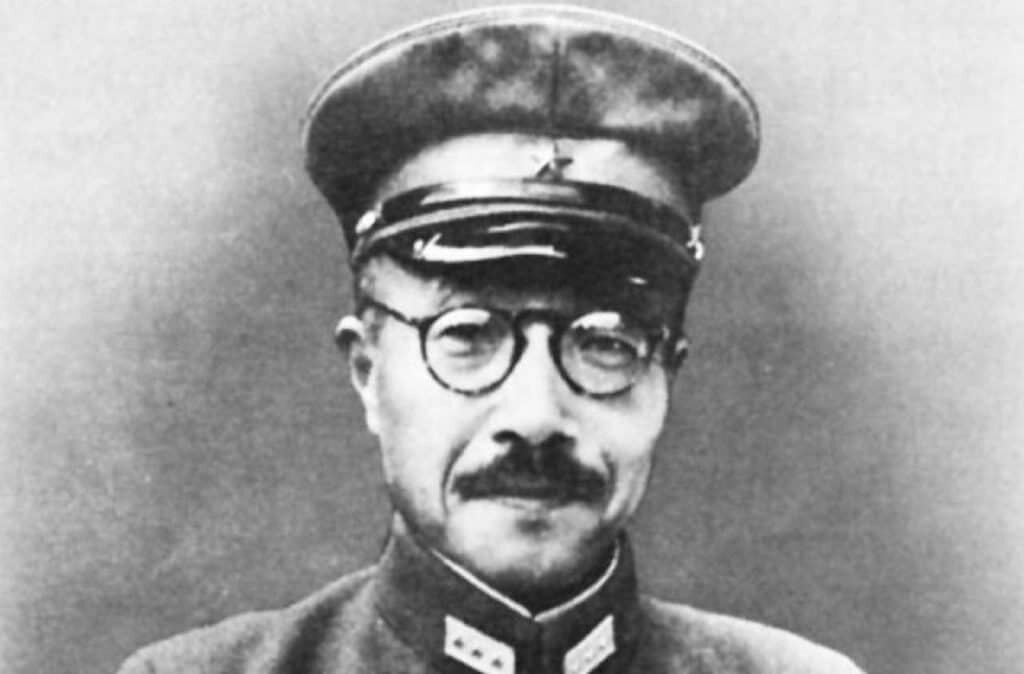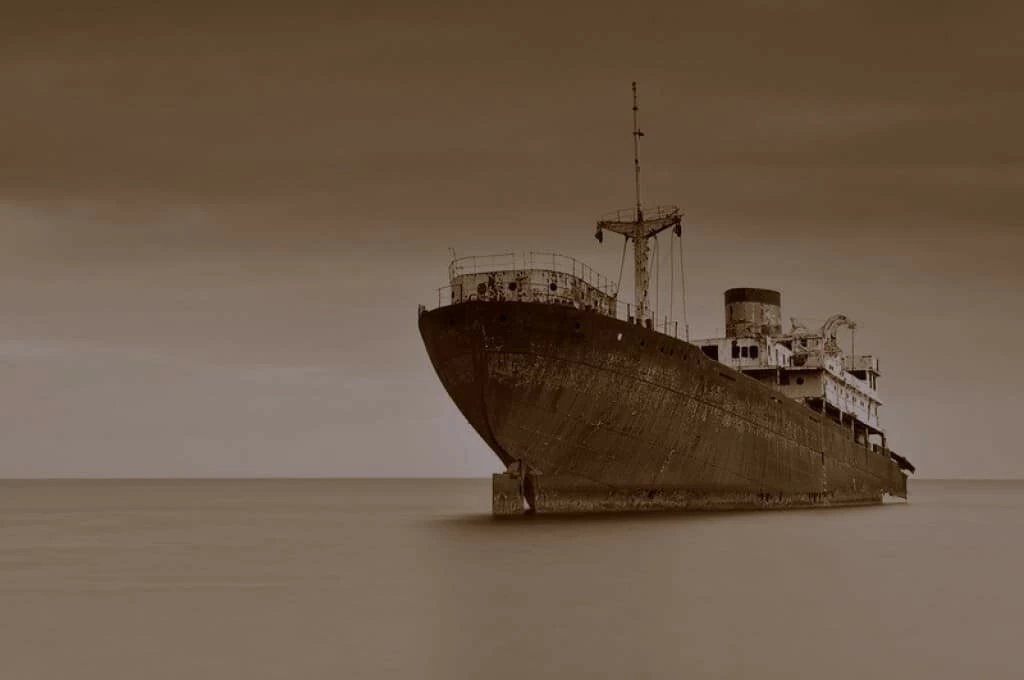Maritime history is full of tales of ghost ships and sea serpents. Not all of these are true and accurate accounts or if they are, they are prone to exaggerations and embellishment. Believers and skeptics have hotly debated stories like these. While some of these tales originate centuries ago, one of the more curious tales is mere decades old. This is the story of the S.S. Ourang Medan
Ominous Radio Message From An Unknown Ship
Depending on which report is accurate, a curious radio message was received by numerous ships traveling along the Straits of Malacca, situated around Sumatra and Malaysia in either June 1947 or as late as February 1948. At the time, the origins of this message – an SOS – were not known. The message itself was divided into two parts, separated by Morse code that could not be deciphered. Those that received this message insisted that the transcript went:
All Officers, including the Captain, are dead. Lying in chartroom and bridge. Possibly whole crew dead. … I die.
Nothing else was transmitted after this chilling conclusion. Two ships, both American, picked up the messages and felt compelled to investigate. With the help of British and Dutch listening posts, the coordinates of the vessel thought to be transmitting were triangulated. It was the Dutch freighter S.S. Ourang Medan. An American merchant ship, the Silver Star, was sent to the coordinates. Given the content of the distress calls, the Captain of the Silver Star wasted no time in navigating to the new heading. Several hours later, the look-out on board the Silver Star spotted the stricken Ourang Medan. Even as the rescue ship pulled alongside, no signs of life could be seen visually. All efforts to contact the crew failed, forcing the Captain of the Silver Star to organize a search party.
Something Horrific Happened On Board The S.S. Ourang Medan
The moment that the search party boarded, it was obvious that the messages were horribly accurate. Corpses of the Dutch crew littered the decks of the Ourang Medan. The victims’ eyes stared wide with horror, and their faces lay twisted in sheer terror. Their arms had tried to fight off something. Not even the ship’s dog escaped the terror of whatever had taken place. The canine was discovered to be in the midst of snarling at the cause. The captain was found, as one might have expected, on his bridge. The remainder of the bridge officers were found in the wheelhouse and chartroom. The radio operator, who presumably sent the distress call, was found at his station. The engineering crew was also found at their stations with precisely the same expressions on their faces.
Related: Legends and Sightings of the Flying Dutchman
During the search efforts, the rescue party noticed several things that struck them as odd. The local temperature was in excess of 100°F but members of the team felt an ominous chill coming from somewhere. Another mystery was the conditions of the victims. All of them had suffered but none had any injuries to note. They were also decaying quicker than they should. The ship itself didn’t appear to have suffered any damage. When the search party returned to the Silver Star, they quickly decided to tow the Ourang Medan for salvage. It was only when they tethered the ships together that they discovered smoke below decks, specifically in the No. 4 cargo hold. Within seconds after they severed the tow rope, the Ourang Medan exploded. The sheer force lifted it out of the water before it sank to the seafloor.
U.S. Coast Guard Report
The first official mention of the incident came from the United States Coast Guard in May 1952. In addition to the witness testimony of the state of the crewmembers, the account added grim details:
their frozen faces upturned to the sun… staring, as if in fear… the mouths were gaping open and the eyes staring.
Fact or Legend?
One of the arguments that counters the truth of the event came from the registry of the Ourang Medan. Officially, it appears as that the ship never existed, although the Silver Star was a real vessel. But at the time the Ourang Medan was supposedly foundering, the Silver Star was operating under another registration: Santa Juana. The Grace Line shipping company had bought rights to the vessel and renamed it.
In contrast, those that believe in the Ourang Medan story insist that the registration of the ship originated in Sumatra. At the time, Sumatra was a Dutch colony that formed part of the Dutch East Indies. In Indonesian, Ourang means ‘man’ and Medan is the largest city on the island of Sumatra. Hence the name Ourang Medan literally means ‘Man from Medan.’ There are no records that back up this ascertain. Even Lloyd’s Shipping registers and the Dictionary of Disasters at sea 1824-1962 has found no mention of the Ourang Medan.
The Booklet “Das Totenschiffin der Südsee”
Professor Theodor Siersdorfer of Essen in Germany has spent much of the last 50 years researching the story of the Ourang Medan. Siersdorfer was the first to mention the names of the American ships that originally went in pursuit of the Ourang Medan and refers anyone interested in their own research to a German booklet written in 1954. The author of this publication was a man by the name of Otto Mielke. He seemingly knew a lot about the mysterious ship, with knowledge of its route, cargo, and name of the captain.
You May Also Like
Discovery of Over 40 Ancient Shipwrecks in the Black Sea
This booklet, called Das Totenschiffin der Südsee, established the date as June 1947. Rumors suggest that a crewman aboard the Silver Star authenticated this. It was also this booklet that mentioned the cargo hold and what might have been inside. According to this booklet, the cargo hold contained potassium cyanide and nitroglycerin. If this is actually true, then it could explain why there are no official records anywhere. Certainly having these combustible items on a rough sea is severe negligence. It could also explain the subsequent explosion shortly after the salvage attempt.
Shirō Ishii, Biological Weapons and Unit 731
Some speculated that the ship was carrying a far more sinister and dangerous cargo. One theory suggests that the Japanese may have smuggled experimental biological weapons manufactured by them. Known as Unit 731, the weapon was secret research and development. According to this theory, the Japanese aimed to create the most dangerous chemical weapon for their establishment of Japanese supremacy. A Japanese bacteriologist named Shirō Ishii conducted terrible experiments during the Second World War. He developed Unit 731 sometime in 1932. Is it possible that the Japanese smuggled Unit 731 onto a nondescript merchant vessel with a foreign crew because they did not want attention? If so, what went wrong?

Comparisons to the Philadelphia Experiment have been made by some UFOlogists. Some people blamed the paranormal for whatever happened aboard the ill-fated ship. The unnatural deaths of the entire crew have lent some form of credibility to these and other causes that imagination has conjured up in the last half a century. Even undead pirates, like the crew of the fictional Black Pearl, were suspect.
Was the tragedy on the S.S. Ourang Medan a genuine event or just a mariner’s seafaring tale designed to scare, frighten, or dissuade?
Sources:
Mysterious Universe
The Unexplained Mysteries
Slightly Warped
